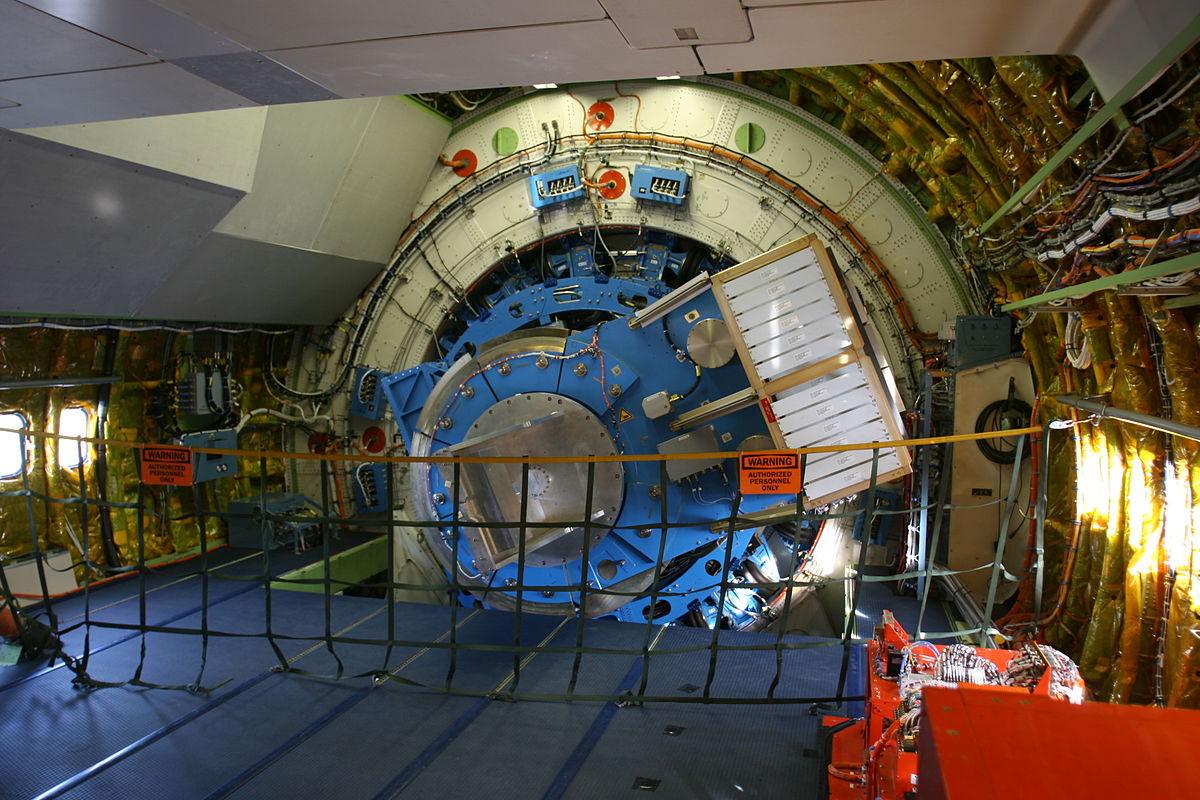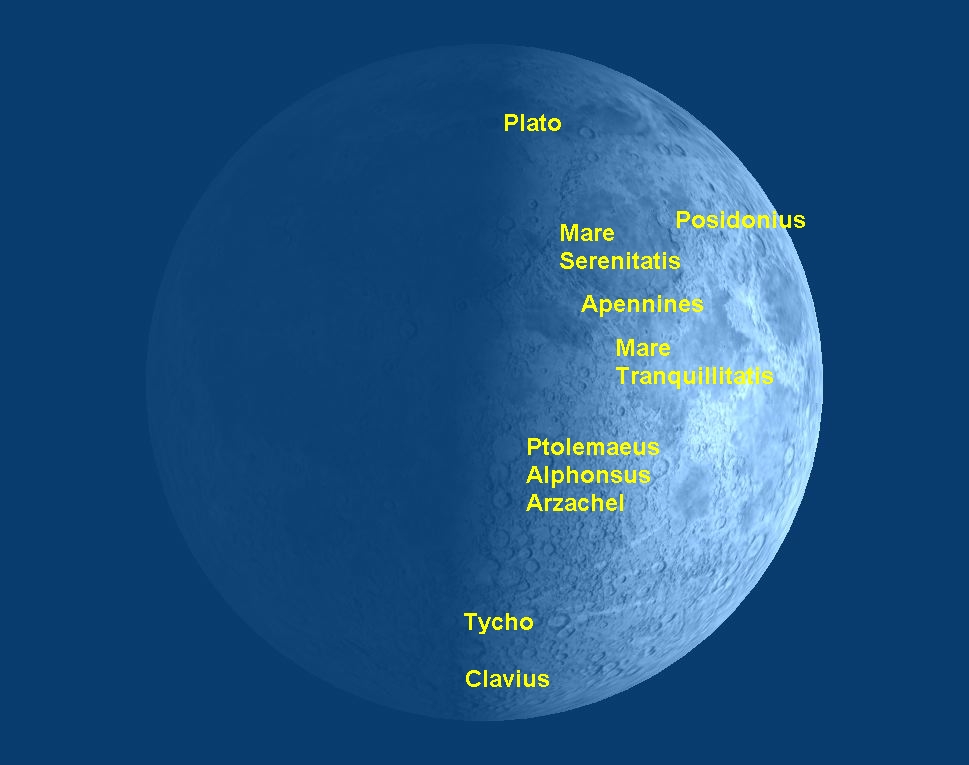Important links:
Copyright © 2020-2025 TuringPod. All rights reserved.
Designed and developed by: Hridayjit Kalita
SOFIA (Stratospheric Observatory For Infrared Astronomy) is currently the largest airborne space observatory in the world consisting of a 2.7m aperture (effective diameter of 2.5m) reflecting-parabolic primary mirror and a secondary hyperbolic mirror (0.37m dia.) that is built sensitive to a wide range of infrared wavelengths. The telescope optical path involves two nasmyth foci including both IR and visible range focus (as a guide) using gold and aluminium coated flats respectively. The telescope is mounted on a Boeing 747 SP aircraft which flies at an altitude of over 45,000 feet (13.72 km) to prevent the effect of water content in the atmosphere (reduced 100 times that of the terrestrial sites) from interfering with the infrared range of the spectral data obtained from distant celestial objects. The primary and secondary mirrors are placed in the aft part of the aircraft with a doorway that can be opened and closed. This part is separated from the observer chamber and other scientific instruments fitted at the focal plane by an airtight pressure bulkhead, maintaining a suitable ground pressure and temperature. The project is collaboratively funded by NASA and German space agency (DLR) contributing 80% and 20% respectively in its operational cost and time of study.

Source: Wikimedia Commons
Gliding through the upper atmosphere of earth, SOFIA possesses a number of advantages over any ground based telescopes or even the Hubble space telescope (HST) in many aspects. The flight can be circumnavigated to any location on earth for best view of every celestial event in our solar system, deep space galaxies, star forming clouds, supernovae explosions and nebulae. It can be bought back to earth after every flight, which facilitates upgradation of its equipments and software, replacing devices with the new ones and repairing the older ones.
Instruments in SOFIA
FORCAST (Faint Object infrared Camera for the SOFIA Telescope) is a mid-infrared camera with filters for imaging dual channels of wavelength bands in the ranges of 4-25µm and 25-40 µm and also incorporate grism spectroscopy at lower resolution of about R ̴̴ 200. It exhibits reduced diffraction and enhanced spatial resolution for best view of the star clusters, galaxies and molecular clouds.
FLITECAM (First Light Infrared Test Camera) provides a seeing and diffraction limited imaging in the ranges of 1-3 µm and 3-5.2 µm along with grism spectrography of resolution, R ̴ 2000 in the above cumulative range.
GREAT (German receiver for astronomy at terahertz frequency) is designed to investigate the spectral range at a high resolution and it belongs to the principle investigation (PI) class.
HIPO (High speed imaging photometer for occulations) also belongs to the PI class instrument that provides a high speed time resolved photometry at two optical wavelengths simultaneously and includes a flexible optical system for targeted observation. It can be operated along with the FLITECAM on SOFIA for measuring the same sky object simultaneously.
HAWC (High-resolution Airborne Wideband Camera) is a far infrared camera with high spatial resolution and imaging at a wavelength range of 50-240 µm and spectral range, R ̴ 5-10.
SOFIA comparison with HST and JWST
Hubble space telescope (HST) is mostly used for observing the ultraviolet and the visible range of the spectrum with lower capability in the infrared region extending upto 2.5 µm. SOFIA forms a complimentary instrument with the HST by acquiring also the near and far infrared part of the spectrum with enhanced spectral resolution at the near-infrared region. The diameter of the primary mirror in HST is about 2.5m (which is comparable to the diameter in SOFIA) giving it an unprecedented sensitivity. Employing along with SOFIA to observe young stars on the same patch of the sky can give a complete understanding of the star formation in the molecular clouds, their dynamics and chemistry.
Until the launch of the upcoming James webb space Telescope (JWST) which is going to be an infrared telescope, SOFIA would provide astronomers the capability to observe and investigate the complex hydrocarbon (atomic structures) and other organic signatures in the interstellar clouds and incoming comets across the wavelength range of 5 to 8 µm. This would enhance our understanding of the origin of our solar system and life. Even after JWST is put to orbit, the SOFIA will be capable of complimenting JWST observations beyond 28 µm and provide higher spectroscopic resolution in the range 5-28 µm.
SOFIA in discovering presence of water on Moon
SOFIA used its FORCAST instrument to capture infrared wavelengths of light (emission and reflectance) from two different locations on the lunar surface. The first location selected was at a region of higher latitude (southern hemisphere) in the Clavius crater while the other at a lower latitude near to the equator in the Mare Serenitatis. Both the locations were selected with reference to the prior studies conducted for the detection of widespread hydration on the lunar surface. Three of the previous studies out of the four reported reduction in the amount of total water content (OH+H2O) from the lunar higher latitude to the equator (or the decrease in the 3µm band depth) using Moon mineralogy Mapper (M3) instrument aboard the India’s Chandrayaan-1 orbiter, while the other study reported no reduction in the total water content. From all of the four studies, thus it is clear that the observation at a higher latitude in the clavius crater would inevitably yield data for water abundance. Since 3µm wavelength band cannot distinguish between the abundance in molecular water and hydroxyl, 6µm band observation was used in the FORCAST instrument of SOFIA.

Source: cdn.mos.cms.futurecdn.net
Both the Clavius crater and the Mare Serenitatis region on the lunar surface were imaged with a total of 12 frames with 6 for each region and are observed after a time gap of 10mins. A frame integration time of 4.16s was taken for the higher latitude and 3.8s for the lower latitude region. The altitude of the aircraft was maintained between 13,105m and 13,112m with 33.060-33.540 zenith angle between the two regions. Even at that height, the atmosphere is not completely free from water content exhibiting an abundance of 2-10µgg-1, the opacity of which was corrected using atmospheric transmission (ATRAN) model.
The peaks of the obtained band depth at 6µm in the clavius crater were compared with the other lab prepared water bearing solids to make sure the bands were not formed due to the influence of atmospheric water. The abundance (or the content) of water was measured by the depth of those band peaks by comparing with the diffused reflectance peak from a pre-known water concentrated sample of particulate glass and transforming the emission band spectre from the lunar surface into the reflectance spectre using Kirchhoff’s law. The final measured water abundance in the Clavius crater was thus found to be about 200µgg-1 with an error of 80µgg-1.
A number of possible theories also came up about the mechanism of water formation on the lunar surface. It was concluded that the impacted asteroids and comets might have carried water along with it which got trapped within the impacted glass. Another theory suggests the combination of hydrogen from the solar wind and the oxygen from material oxides to form hydroxyl which eventually transformed into water and trapped as ice in cold shadowy region of the large craters.
References
- Li, S. & Milliken, R. E. (2017) Water on the surface of the Moon as seen by the Moon Mineralogy Mapper: distribution, abundance, and origins. Sci. Adv. 3, 1–11
- Wöhler, C., Grumpe, A., Berezhnoy, A. A. & Shevchenko, V. V. (2017) Time-of-day– dependent global distribution of lunar surficial water/hydroxyl. Sci. Adv. 3, e1701286
- Grumpe, A., Wöhler, C., Berezhnoy, A. A. & Shevchenko, V. V. (2019) Time-of-day-dependent behavior of surficial lunar hydroxyl/water: observations and modeling. Icarus 321, 486–507.
- Bandfield, J. L., Poston, M. J., Klima, R. L. & Edwards, C. S. (2018) Widespread distribution of OH/H2O on the lunar surface inferred from spectral data. Nat. Geosci. 11, 173–177.
- Gehrz, R.D., Becklin, E.E., Pater, I.de., Lester, D.F., Roellig, T.L., Woodward, C.E., (2009) A new window on the cosmos: The Stratospheric Observatory for Infrared Astronomy (SOFIA). Advances in Space Research 44: 413–432
- Honniball, C.I., Lucey, P.G., Li, S., Shenoy, S., Orlando, T.M., Hibbitts, C.A., Hurley, D.M., Farrell, W.M. (2020) Nature Astronomy. https://doi.org/10.1038/s41550-020-01222-x
Important links:
Copyright © 2020-2025 TuringPod. All rights reserved.
Designed and developed by: Hridayjit Kalita